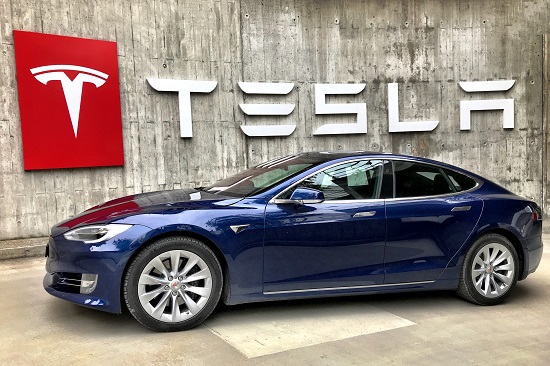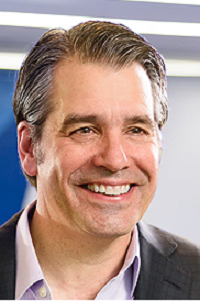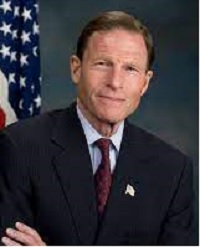
[ad_1]

By John P. Desmond, AI Trends Editor
The California Highway Patrol on May 10 arrested a 25-year-old man seen driving in the back seat of his Tesla Model 3 with no one in the driver’s street.
He was seen traveling eastbound on I-80 across the San Francisco-Oakland Bay Bridge toward the city of Oakland; the incident was reported to CHP via numerous 911 calls, according to an account from The Next Web.
While it was the man’s first arrest, it was not the first time he had relied on Autopilot to drive the car. In a television interview, the occupant, Param Sharma, revealed a blind trust in the Autopilot technology. “I’ve been brake-checked before really hard, and the car stopped. The car came to a complete stop. Elon Musk really knows what he’s doing, and I think people are tripping, and they’re scared,” stated Sharma.
In another recent incident on May 5, a Tesla involved in a fatal crash in Fontana, Southern California was operating on Autopilot at the time, authorities have said. The crash is under investigation by the National Highway Traffic Safety Administration (NHTSA), according to an account from NBC Los Angeles. It is the 29th case involving a Tesla that NHTSA has undertaken; four have been fatal.
A 35-year-old man was killed when his Tesla Model 3 struck an overturned semi-trailer truck on a freeway at about 2:30 am. Another man was seriously injured when the electric vehicle hit him as he was helping the semi’s driver out of the wreck.
“While the CHP does not normally comment on ongoing investigations, the Department recognizes the high-level of interest centered around crashes involving Tesla vehicles,” the agency said in a statement. “We felt this information provides an opportunity to remind the public that driving is a complex task that requires a driver’s full attention.”
Automakers Have Proposed Voluntary Guidelines
In voluntary guidelines released in April, a leading auto industry advocacy group called upon automakers to set up their semi-autonomous vehicles with driver monitoring technology, and to clarify messaging so as not to mislead consumers, according to an account in GovTech.
The Alliance for Automotive Innovation (AAI) did not name Tesla in the voluntary guidelines released in April, but the message came soon after another fatal Tesla crash in Texas and after engineers with Consumer Reports found a Tesla Model Y could easily be tricked into driving without someone in the driver’s seat.

“High profile crashes involving Level 2 systems where drivers were not appropriately engaged, erode consumer acceptance of and consumer confidence in Level 2 systems and could have implications for acceptance of more highly-automated vehicles,” stated CEO John Bozzella of the Alliance. “It was clear to our member companies that we needed to begin a public conversation about the importance of effective driver monitoring.”
While Tesla is not represented, the automakers in the group sell 99% of new cars in the US, Bozzella stated. Only Tesla and General Motors Co. currently offer a vehicle in the US with Level 2 autonomy, which means the vehicle can steer or accelerate on its own but still requires a human to be alert and engaged at the wheel.
Critics argue that Tesla’s Autopilot and “Full Self-Driving”—both of which are driver-assist systems and do not make the vehicle fully autonomous—are misleading names that give customers the false impression that they do not need to pay attention at the wheel.
Asked specifically by GovTech whether Bozzella was concerned about Tesla’s messaging causing the repeated accidents, undermining public confidence in driver-assist systems, Bozzella responded “there is no question that high-profile crashes have raised questions, consumer acceptance and consumer confidence questions.”
Congressional Proposals Would Set Standards for Assistance Features
Debate is ongoing about how the government should approach the increased automation being built into cars each model year. Some members of Congress are pushing the Transportation Department to do more, and lawmakers are proposing to broaden the agency’s role in evaluating the safety and effectiveness of pedestrian avoidance and driver monitoring features, according to an account from Recode.
For example, Rep Bobby Rush (D-IL) has proposed new legislation that would force the department to study crash avoidance technology.
The clash of marketing and engineering is evident as autonomous driving features roll out from manufacturers. The California Department of Motor Vehicles has stated that “Tesla is currently at Level 2” of a six-level scale culminating at level six, fully autonomous driving, which no company has achieved.
Tesla officials have said privately that statements from CEO Elon Musk have exaggerated the full self-driving capabilities for Tesla vehicles and do not “match engineering reality,” according to an account in The Verge based on a California DMV public record.
Waymo, which is owned by Google’s parent company Alphabet, earlier this year dropped the term “self-driving” in favor of “more deliberate language” in its marketing, reported The Verge.

In another effort from Congress, in April Sens. Richard Blumenthal (D-CT), Ed Markey (D-MA) and Amy Klobuchar (D-MN) reintroduced the Stay Aware for Everyone Act, urging the NHTSA to “develop recommendations for improving automated driving and driver assistance systems” and “implement policy changes that stop these preventable deaths from occurring.”
“With NHTSA often slow to act and auto manufacturers rushing to put new autonomous features in cars, this bill and other congressional action that puts public and driver safety first is necessary,” Blumenthal stated to Recode.
Even the AAI trade group has called for more oversight, stating that forward collision warnings, automatic braking, and lane assistance tech need to be evaluated by regulators and included in NHTSA’s new car rating systems.
“Before we get to autonomous technology that can do everything that people can do, there’s a real opportunity to introduce lifesaving technology into vehicles that people will still be driving,” stated Jason Levine, the executive director of the Center for Auto Safety, a nonprofit focused on vehicle safety, in the Vox account.
The NHTSA has yet to create any national standards for how well crash avoidance and driver assistance features should perform, stated Ensar Becic, an investigator for highway safety for the National Transportation Safety Board.
Meanwhile, manufacturers continue to add autonomous features to cars, inching toward more self-driving. “Manufacturers are out there advertising their different versions of this technology, without any true sense of oversight,” stated Levine.
Read the source articles in The Next Web, from NBC Los Angeles, in GovTech, from Recode and in The Verge.
[ad_2]
Source link